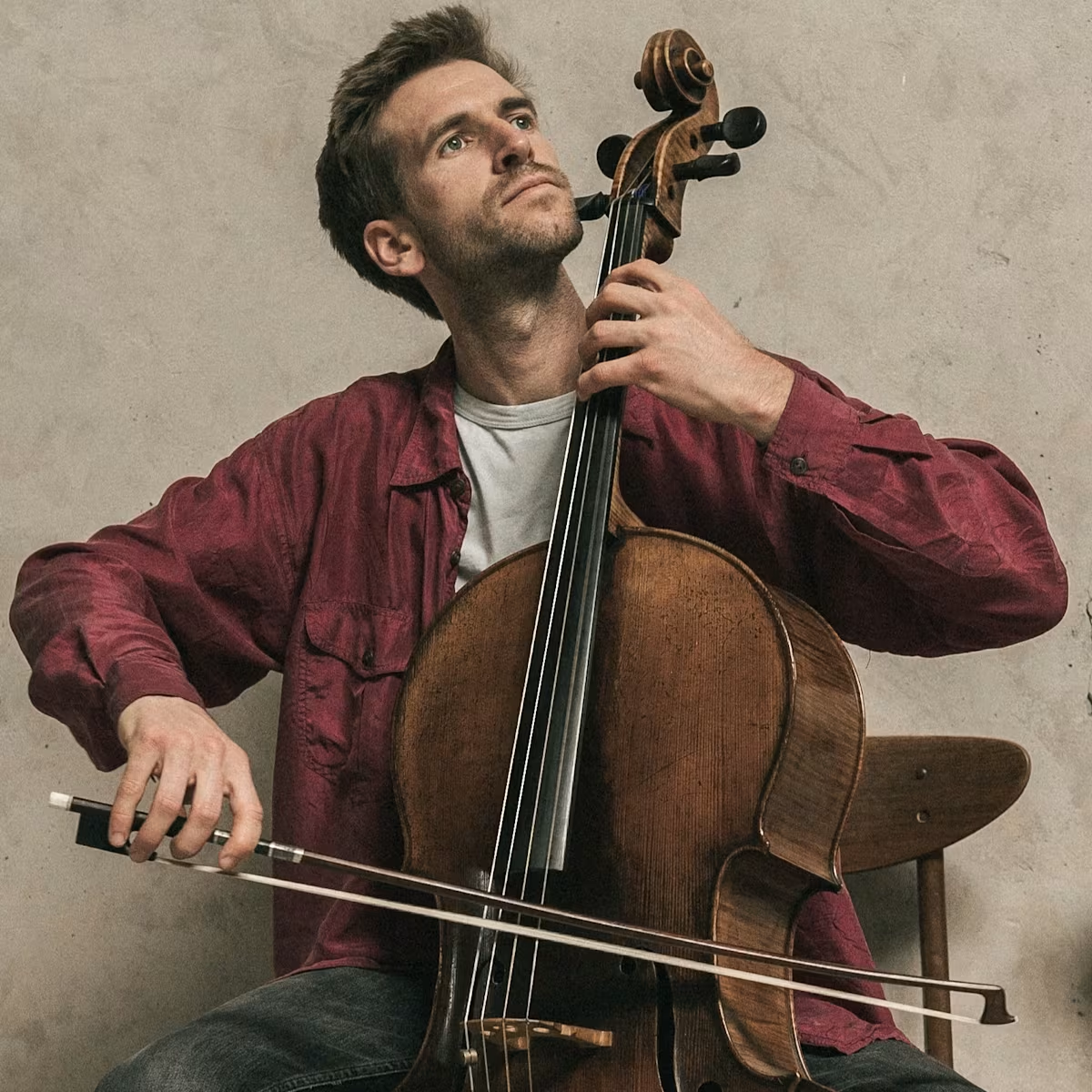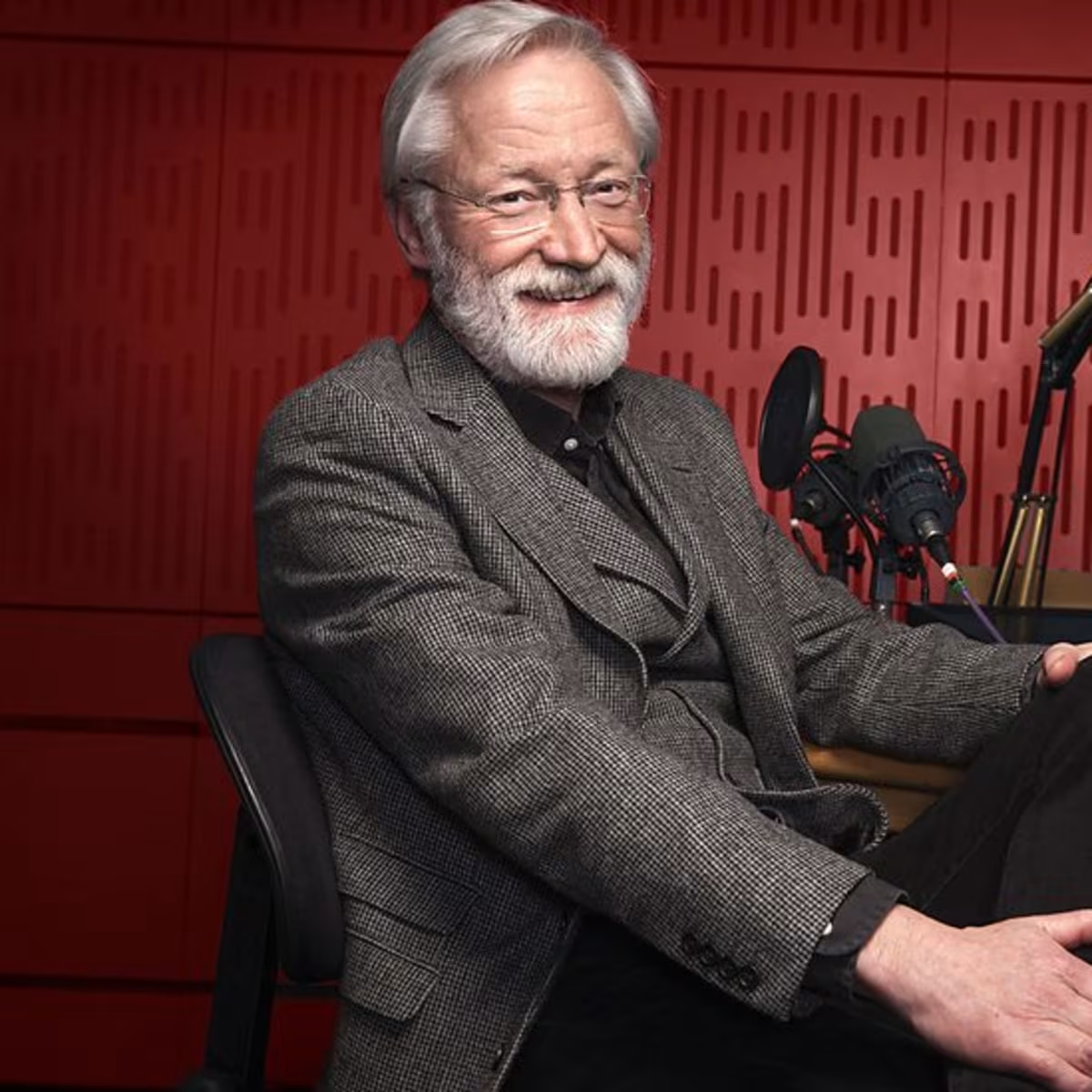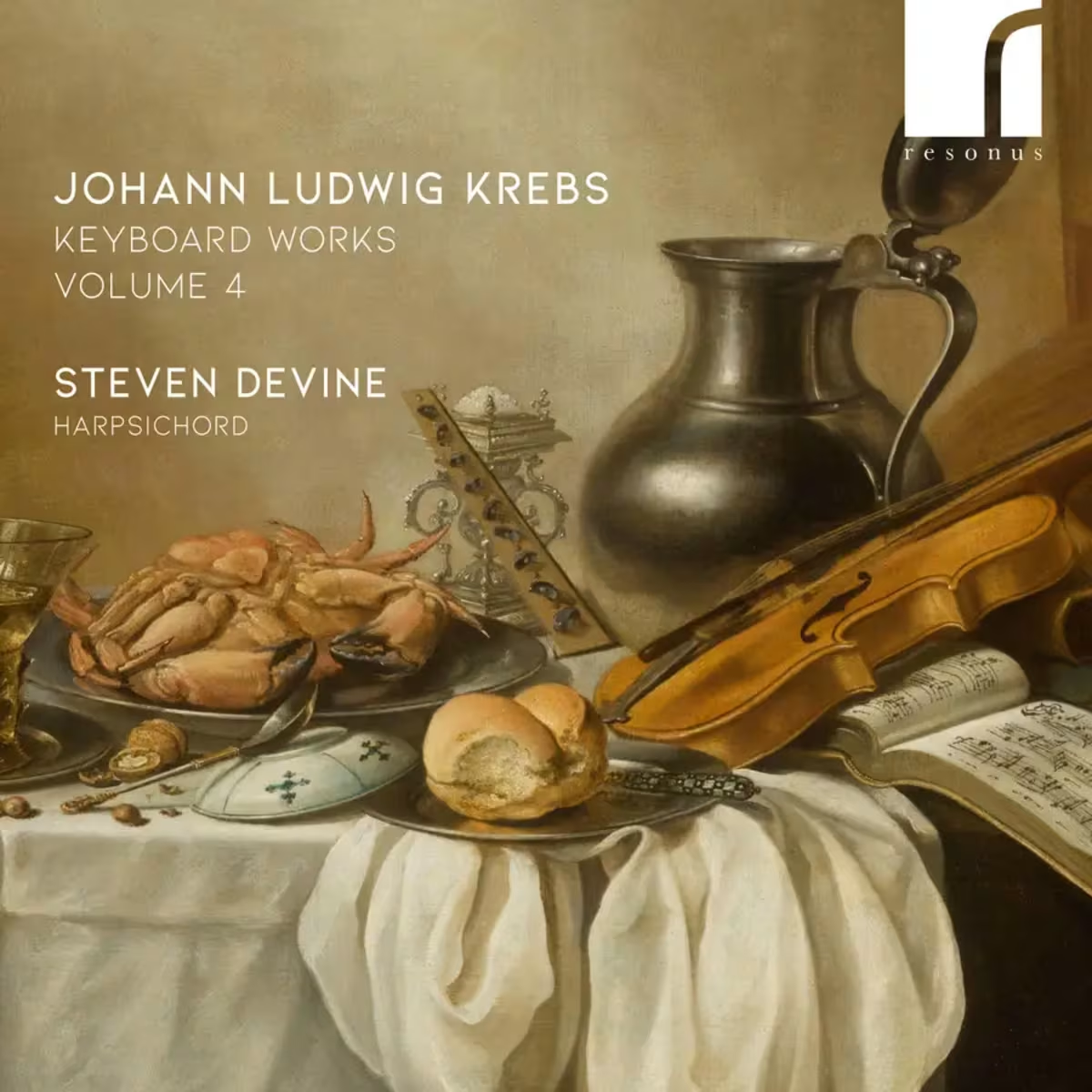Feature
Peter Whelan Introduces…
Baroque connections: Vivaldi, Handel, J.S. Bach
Share this

Continuo Connect recently caught up with conductor, music director, harpsichordist, and bassoonist Peter Whelan. Peter was fresh from a “jaw dropping” and “near perfect” (The Arts Desk) St Matthew Passion with the Irish Baroque Orchestra, and about to embark on no fewer than three major early music projects almost simultaneously, so we were fortunate to be able to talk to him about them!
These three major projects feature the three key composers of the Baroque, who were almost exact contemporaries of each other: Vivaldi, Handel, and J.S. Bach - yet they are utterly different in their musical styles, as Peter explained to us...
Vivaldi: L’Olimpiade
Irish National Opera
Vivaldi’s 1734 opera L’Olimpiade is relatively unusual to see performed in the English-speaking parts of the world, and Irish National Opera with the Irish Baroque Orchestra have put together something of a trilogy of Vivaldi operas (Griselda in 2019, and a co-production with the Royal Opera House of Bajazet in 2022 for which Peter Whelan and the Irish Baroque Orchestra won an Olivier Award for outstanding achievement in opera).
Peter confesses to being a “huge fan” of Vivaldi. Given Peter’s background as a bassoonist, perhaps this isn’t surprising - Vivaldi, after all, composed around 40 concertos for solo bassoon, which Peter says were his “bread and butter” for many years. Peter had an Italian teacher, Sergio Azzolini, during his time studying in Basel, and he recalls Azzolini showing him how to bring the music of Vivaldi to life. Stravinsky reputedly dismissed Vivaldi as having written "the same concerto five hundred times", and indeed the music can seem straightforward and familiar on the page, but as Whelan says:
"Once you feel it … find the direction of the lines … where he’s coming from: it’s a rich tapestry from a wonderful composer"
The Four Seasons is typically one’s first encounter with Vivaldi’s music, and he was a famous violinist as well as composer. But Vivaldi was best known during his lifetime as an impresario and composer of opera; around fifty of his operas are known today but it’s believed there were more, perhaps a hundred. And he had a particularly close collaboration with his favourite prima donna, Anna Girò, for whom he created no fewer than 14 operatic roles, including in Griselda and Bajazet.
Whelan finds it interesting to compare Vivaldi with Handel, also best known during his life as an opera composer (and fellow impresario), sometimes even using near-identical subjects and libretti (Handel’s Tamerlano being adapted by Haym from Piovene’s libretto for Vivaldi's Bajazet for example):
“They are such very different composers; Vivaldi was from a Catholic background and draws on primary colours, with heart-on-sleeve emotions - perhaps not as subtle as Handel… but especially in live performance Vivaldi comes alive, it’s very special. It grabs you by the heart! It’s strange to think of Vivaldi as an ordained priest, but it’s true…”
2024 is, of course, an Olympic year, so it is fitting that INO’s attention should now turn to Vivaldi’s L’Olimpiade. The production is directed by Daisy Evans, and we asked Peter how the working relationship between stage director and music director unfolds. He talks about their close collaboration:
“We have to come up with a plan! Daisy is very attuned to the music - she’s from a family of musicians - you have to delve into the music together and form a consensus about how the piece should be. Lots of work goes on behind the scenes even before rehearsals - auditions for singers, who sings well with who, it’s a complex thing... I’m always amazed that it works, there are so many people involved; it’s such an extreme and intense artform, greater than the sum of its parts, requiring a huge amount of trust in the other people!”
As to the story of L’Olimpiade, we asked Peter for a brief summary to whet our appetites:
“It’s set in the ancient Olympic games. There is a love interest, family complications, intrigues, murders… you name it! It has a complex story, but the big themes are love and jealousy, and family pride versus love. Strong hints of Romeo and Juliet!”
Handel: Israel in Egypt
Monteverdi Choir and Orchestra
Moving from opera to oratorio, and Handel’s Israel in Egypt which Peter will be directing (i.e. conducting, from the harpsichord) with the Monteverdi Choir and Orchestra. The work and these performers have a special resonance for Peter. In 1992 the Monteverdi Orchestra performed it at the BBC Proms; at the time Peter was growing up in Ireland, with limited access to classical music. But he recorded this performance and became hooked; he watched it over and over - so many times, in fact, that he says the tape disintegrated! One can imagine Peter’s delight to be asked to conduct this work with the same orchestra, therefore.
He describes Israel in Egypt as:
“Immense - full of amazing choruses - showstoppers; this is Handel letting his hair down! He goes to town with the word-painting, he seems to thoroughly enjoy portraying the plagues described in the text!”
The scoring is indeed for a large ensemble - it features a double chorus, with the orchestra including trombones, trumpets, a big woodwind section, and timpani. The music is vintage Handel, but actually includes what Peter describes as “recycling”, including of music from other composers as well as Handel’s own. Peter says this is an especially interesting feature of Handel; he will adopt and adapt other music, making cuts and changes to it, making it his own. Peter thinks that Handel may have done this to re-ignite his own inspiration, which he reckons was “a smart thing to do”.
Israel in Egypt’s librettist, Charles Jennens, had previously worked with Handel on the oratorio Saul in 1738 as demand for Handel’s operas waned. They swiftly moved on to Israel in Egypt in the same year, with Handel composing the music in just one month (perhaps helped by his aforementioned tendency to “recycle”!). Jennens collaborated with Handel again in 1741 for Messiah, and with a strong connection to Peter Whelan’s native Ireland, for the first performance was in Dublin, in 1742. Peter has spent considerable time researching Handel’s time in Ireland - who he met, what he did - and recalls the Dublin he knew in the 1980s, visiting a then-derelict Fishamble Street, once home to Neale’s Musick Hall where Messiah’s premiere took place, sparking his imagination. He’s since discovered much:
“There’s a rich heritage of Baroque music in Ireland! Dublin was, at the time, the second biggest city after London, there were lots of people coming through - including Germiniani who lived there for a while. We rediscovered the Irish State Musick who were based at Dublin Castle, who would have provided musicians for Handel… he had a subscription series in Dublin even before Messiah, and that would have included Israel in Egypt”.
Peter’s exploration of Ireland’s Baroque music heritage was celebrated at Dublin Castle in 2017 in a special concert by his Ensemble Marsyas, itself well worth reading about.
The structure and plot of Israel in Egypt underwent several changes after the first performance, but is now typically performed in two parts, Exodus and Moses’ Song, and mostly features choruses with relatively few arias - Peter describes the choruses as “a real joy with a virtuoso choir like the Monteverdi Choir”. As with L’Olimpiade, we asked Peter for a brief overview of Israel in Egypt’s story:
“Exodus is a graphic description of the plagues visited upon the Egyptians by God - Handel seems to particularly enjoy the plague of frogs! - and the flight of the Israelites from Egypt’s Pharaoh. The second part, Moses’ Song, has a less clear narrative, but it’s a celebratory way of depicting the successful escape of the Israelites, a celebration of their deliverance”.
We couldn’t help asking Peter if there was any comparison - perhaps in terms of spectacle - with that other famous Egypt-linked work, Verdi’s Aïda, and fortunately, he humoured us:
“It’s certainly ‘exotic’ from Handel; his harmony is often on edge - portraying for example a “thick darkness over the land” - it’s very chromatic, it shifts around; he pushes the boat out in terms of colours and textures. The use of the three trombones is spectacular, they are involved throughout!”
J.S. Bach: Easter Oratorio
Orchestra of the Age of Enlightenment
The third project which Peter is about to undertake is J.S. Bach’s Easter Oratorio, which he describes as:
“Another absolutely massive work… and in terms of where it sits in the year, an incredibly important work. I’ve just finished a performance of [Bach’s] St Matthew Passion. It’s interesting going straight from that to the Easter Oratorio, like going from night into day”.
It’s almost impossible to imagine, now, the brand-new music presented by J.S. Bach to the people of Leipzig in the early 18th century in the final decades of his life, including the St Matthew Passion and St John Passion of 1727. It’s interesting to observe the connections between Bach’s musical activity in these years with what Handel and Vivaldi were up to at the same time; for example, the combination of a much-adapted St Mark Passion (attributed originally to Keiser) together with Handel’s Brockes Passion for a new performance in 1747. Vivaldi’s music also reached Bach - he arranged several of his works, notably the Concert for four harpsichords (originally Vivaldi’s Concerto in B minor from L’estro armonico); Bach is believed to have had at least five harpsichords at home, so this may have been a family affair!
The Easter Oratorio, then, would have been heard on Easter Day after hearing one of Bach’s Passions on Good Friday, bringing the Easter story to an ecstatic conclusion. Peter describes the contrast:
“The John and Matthew Passions don’t have brass, and are incredibly dramatic, brooding, dark works. The instrumental colour is ‘autumnal’ - oboes da caccia, gambas, very rich sonorities, especially the final choruses that are left ringing in the congregation’s ears; and the very next thing they hear is the Easter Oratorio! There are trumpets, timpani, lots of woodwind; the style is changed. It uses the forms of popular music - for example, the second movement is in Venetian style, maybe influenced by Vivaldi? - it is ‘worldly’, celebratory music, surely coming as a shock after the Passions”.
There are several versions of the Passions, and Peter notes the way in which Bach seems to have been careful and sparing with the singers, perhaps an accommodation given the huge amount of work they would have done in the run-up to Easter Day. He believes the work must have been very significant to Bach; he revisited it over and over, reprogramming it, polishing it again and again, and even changing the line-up of characters in the piece. In the first versions, the roles of Simon Peter, John the Apostle, Mary, and Mary Magdalene were all named, but in later versions they are not - Whelan summarises:
“It took him a while to arrive at the perfection that we now hear - and it’s an extremely joyous, reassuring piece, and also moving.”
The Easter Oratorio is unusual, even unique in Bach’s works for choir in that there are no chorales at all. It’s essentially an extended dance suite, beginning with a three-part concerto grosso and followed by arias that are in dance forms: bourrées, gavottes, minuets; and a final chorus in two sections resembling a gigue. Peter describes some of these in graphic terms:
“The bourrée [Sanfte soll mein Todeskummer] is like a musical ‘hug’ - it has a solo tenor, two recorders, muted strings, and it’s the most reassuring movement. Usually Bach will put a tenor through his paces, but this is unusually very comfortable, a ‘hug’. And the gigue [Preis und Dank] at the end, the second part goes twice as fast, it really seems to encourage the congregation to rush out the door in celebration!”
As with L’Olimpiade and Israel in Egypt we asked Peter for a quick summary of the story - if it wasn’t already obvious from the title!
“There is a story - it starts with the disciples running towards the grave where they find Mary Magdalene and the other women; an angel has already informed them that Christ has been resurrected. Simon Peter, then John, and the women all express their different feelings on this; in summary: everything’s going to be OK!”
The role of the conductor
We wanted to understand the role of the conductor or music director and Peter was happy to enlighten us. He draws a comparison to his 20-year career as a bassoonist, which he says was a very different experience. He always used to be focused on the concerts: preparing for that moment, saving energy for that. If you’re a busy player - as he certainly was - “you have to prioritise”, saving energy for the moment of the concert.

He describes conducting as almost the opposite:
“Day one is the stressful part! You come loaded with ideas, you’re dealing with new musicians, and you’ve spent time yourself coming to terms with the music, internalising how you feel about it - and then you have to share it with people, convince them. Sometimes your ideas might change when other people are in front of you, and you need to be open to that. I like to be flexible in those moments. ‘There's more than one way to skin a cat’, as my grandmother used to say! That is, you can arrive at a satisfactory endpoint in many different ways, and it’s good not to be set on one’s own ideas. At the concert, though, you have already imparted your ideas, you can’t speak any more, you just have to enable the musicians and just let it happen.”
Peter often conducts from the harpsichord, a unique dual role:
“You are very busy … there’s a lot going on, spinning plates - at the harpsichord you are giving direction in a different way as part of the bassline, encouraging breathing, showing shapes … it’s one step up from ‘overwhelmed’, let’s say ‘everwhelmed’, there’s so much going on!”
Conducting in an opera like L’Olimpiade is a different experience again:
“The singers and the band are divided by the stage, and you’re in the middle. It’s quite relaxed in the pit, but there’s high adrenaline on stage! You have to be very practical with the singers, show them where they are. Sometimes you are holding things together, but usually you are there to remind the group of what you’ve done together. In opera, it’s expected that you have to be able to sing the words; it hardly ever happens, but sometimes you mouth the words - the worst case is to sing them if something goes wrong!”
Given the undoubted and “everwhelming” levels of stress and pressure he must feel, and Peter’s deep commitment to huge works such as these by Vivaldi, Handel, and J.S. Bach, it’s reassuring that he likes to keep everything in perspective - we’ll leave the last word to him:
“At the end of the day, after the dust settles, you’ll still have to put the bins out and nobody will be applauding that! It helps to keep perspective and remember that that we’re all human and can only do our best.”
Share this
Keep reading

In conversation: George Ross
Continuo Connect meets George Ross, a British cellist specialising in period performance and founder member of the Consone Quartet.

Donald Macleod: Every Composer's Kindest Chronicler
The eminent broadcaster, and longstanding co-host of BBC Radio 3's 'Composer of the Week', reflects on his career and his strong interest in Early Music.

Johann Ludwig Krebs: Keyboard Works
Steven Devine has recorded the complete keyboard works by Johann Ludwig Krebs with a number of world premiere recordings.

